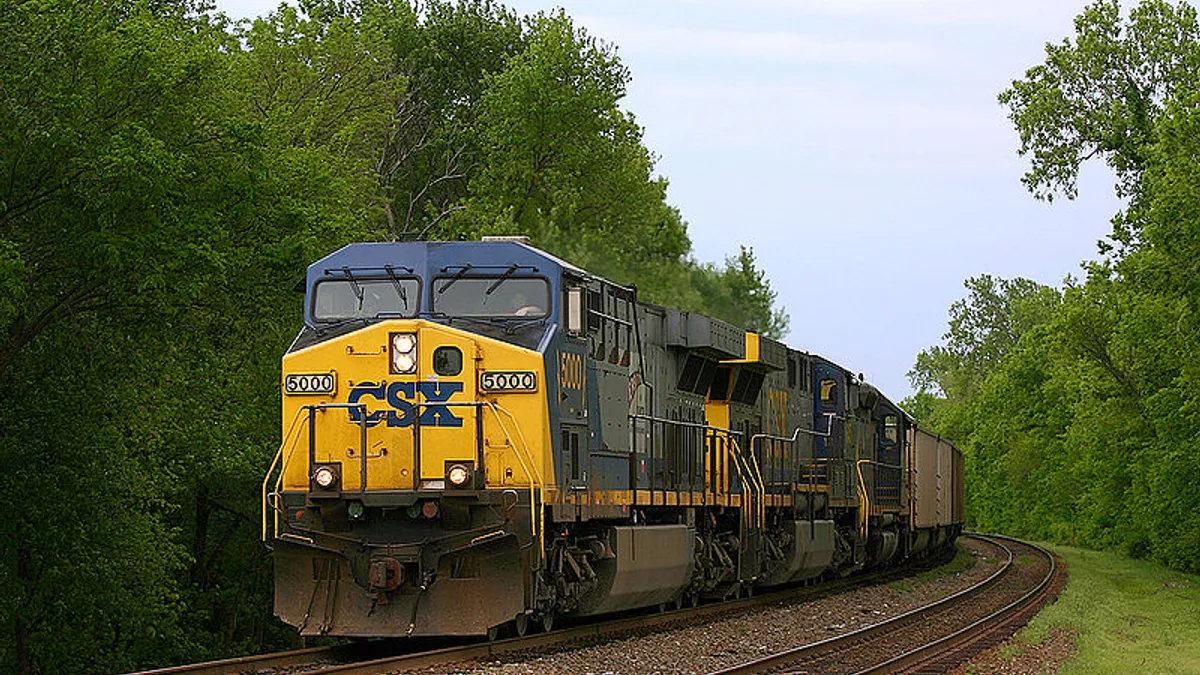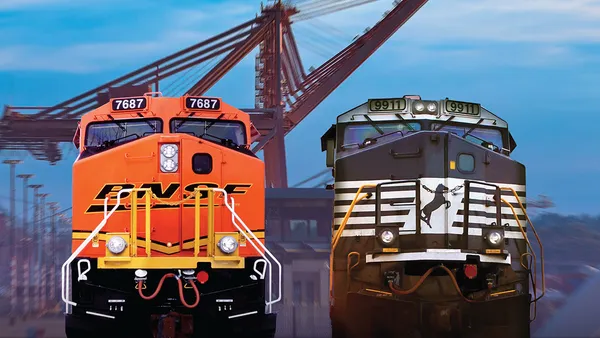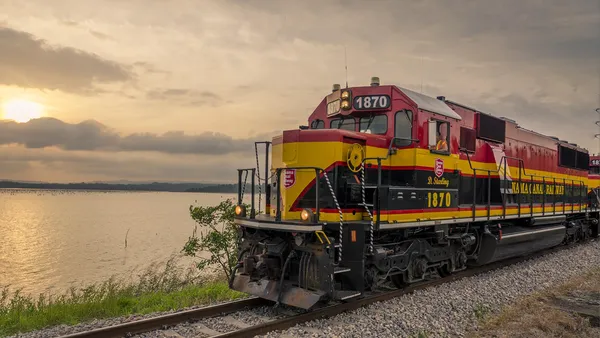Dive Brief:
- A cooling economy combined with intermodal lane rationalizations at CSX caused the railroad to lower its revenue projections for the remainder of the year, executives said on a Tuesday earnings call. The railroad originally projected revenue to be up 1-2% for the year but has now adjusted those predictions, expecting revenues to be down 1-2%.
- CSX CEO Jim Foote called the economic backdrop — of fuel prices, declining volumes across freight categories and uncertainty related to the multi-front U.S. trade war — "the most puzzling I have experienced in my career."
- CSX expects volume to decline across categories from coal to other merchandise to intermodal and placed some of the blame on excess trucking capacity in the market. These declines more than offset growth in agricultural and forest products and minerals in Q2. Plus part of the down volumes are due to an explosion at a Pennsylvania oil refinery, which is a big customer.
Dive Insight:
Rail and trucking volume data are forewarning a coming economic slowdown, and Mark Wallace, executive vice president of sales and marketing at CSX, warned of a muted peak season this year compared to 2018.
In these conditions, what happens to the several railroads streamlining service and focusing on efficiency in the age of precision-scheduled railroading?
CSX was the first U.S. railroad to adopt the principles of PSR and is still working to lower operating ratio and cut what it deems as unnecessary fat from its network. Last year, the railroad was able to reduce its volume by 7% and up revenue by 2%, but that was in a boom. Managing current conditions where trade uncertainty has become the norm, is a different story.
"Now what would help? Obviously, what would help in the back half would be a resolution or clarity on trade tariffs...but that is obviously beyond our control," Wallace said.
In terms of levers to pull to compensate for lower freight volumes, the railroad has relatively few. Pricing, at least on the intermodal side, is fairly fixed since a central tenant of the intermodal business is converting freight from trucks to rail, explained Foote. As the trucking market softens, trains will need to keep prices competitive with a more amenable trucking market.
"It would be much easier for us to respond if suddenly business just dropped 10% today, because then we would know exactly how to right-size the business," Foote said. Though he didn't offer any numbers, the CEO indicated there is a floor on the operating cost they can take out to keep up operational standards if there were a steep decline in revenues.
But efficiency measures are still on the rise. The railroad will continue to decrease the number of locomotives and yards it operates throughout the balance of the year. And CSX is still on track to hold a sub-60% operating ratio (OR) this year. The railroad's OR for the second quarter was 57.4% — down from 59.5% in the first quarter and 58.6% one year prior.
Despite "puzzling" economic indicators, Foote said customers "remain cautiously optimistic about the second half [of the year]."















